Osteochondrosis – degenerative lesion of the articular cartilage and underlying among them bone tissue. Disease affects all the joints of the musculoskeletal system. In the local folk medicine, osteochondrosis called complex degenerative processes in the intervertebral discs, the small joints of the spine and of the vertebral body itself.
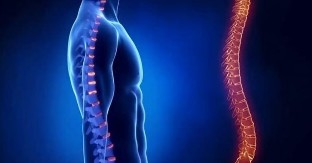
What osteochondrosis is?
Osteochondrosis of the spine is done the neck band, chest and lumbar vertebra. Nature of the disease determines the changed localization of the tissue. The basis of the pathology is a violation of trophism of the intervertebral discs and vertebral body. It leads to a change in the normal structure of the cartilage. By Degeneration of the cartilage disc lose elasticity, it will change the consistency and Form. The distances between the vertebrae are reduced, and the affected Segment of the spine loses stability.
Reducing the distance between the vertebrae is accompanied by the tension of the muscles of the back, sensation of pressure nerve roots from the spinal cord. This explains the emergence of pain and neurological symptoms of osteochondrosis.
Degeneration of the disk leads to a weakening of your outer fiber ring. Therefore arise in patients with osteochondrosis often protrusion (bulging part of the disk) and spinal hernia (overhang Disc nucleus pulposus in the spinal canal). In the future, the pathology extends to the small joints of the spine, bulbosus Bundles:
- bony outgrowths of the vertebral body will occur;
- it is bending over the patient, difficult to erect;
- loses the flexibility of the spine;
- subluxations of the vertebral body will appear;
- the affected areas of the spine (kyphosis, scoliosis) bent.
Degenerative changes in the cartilage and bone tissue are a normal result of aging. For various reasons, the development of the pathology can accelerate. 70% of the patients with osteochondrosis — people older than 45 years. The early appearance of the pathology associated with poor physical Training of children, obesity in young people.
Today's youth spends a lot of time on the Computer, and a television, avoidance of Outdoor games, roads, Hiking and sports, it is not to know what is osteochondrosis and how dangerous he is. A longer stay in a sitting Position wearing:
- Violation of posture;
- Weakening of the back muscles;
- the development of problems with the spine.
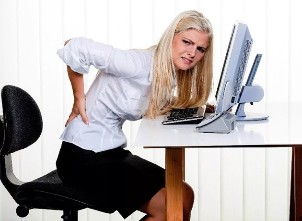
Causes of osteochondrosis
The causes of the disease are divided into 3 groups. The first deals with the increased load on the spine:
- overweight;
- heavy physical work (especially the climbs of the charge);
- Occupations requiring prolonged standing or sitting;
- uncomfortable shoes, High Heels, bag only on one shoulder;
- attitude of weakness;
- not sufficiently developed muscular-skeletal due to lack of exercise;
- congenital and acquired deformities;
- Flat feet.
To the second group of the internal causes include:
- Inheritance;
- age-related changes;
- Metabolic diseases;
- Intoxication of the organism;
- nervous Stress, Stress;
- severe somatic diseases;
- hormonal changes (e.g. pregnancy, menopause);
- autoimmune disease of the connective tissue.
The third group consists of one from the external reasons:
- Injuries of the spine;
- Noticeable lack of vitamins and mineral compounds (especially vitamins D, C, B group, calcium and phosphorus);
- bad habits;
- sleeping on an uncomfortable mattress and pillow.
Professional sports is the cause of premature aging of the intervertebral discs at each 20-th athlete. The process of Degeneration is accelerated after a strong training residue.
Symptoms of osteochondrosis
Osteochondrosis is a chronic disease that flows with alternating phases of exacerbation and Remission. The development of acute symptoms contribute:
- excessive physical stress;
- fatigue;
- Under cooling;
- Injuries;
- Vibrations of the body and the effects of vibration.
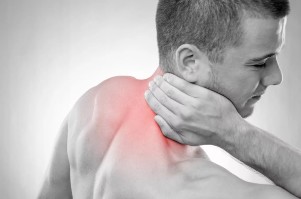
The clinical picture in the case of exacerbations depends on the localization of the affected cartilage, the presence of complications.
- For cervical degenerative disc pain in the neck, hands, stiffness, numbness of the fingers, headaches. If the vortex is pinched artery, the human condition worsens: you are throbbing headache, severe dizziness, is reduced, and the rumor caused "to fly in front of the eyes", possible fainting.
- Symptoms for degenerative disc disease of the thoracic spine, the: acute, interferes with, or aching pain in the back, a sense of "stake in the chest of drawers", the pain in the heart and in the internal organs, shortness of breath (hard to breathe in the full Breasts due to stiffness of muscles and pain).
- In the case of lumbar osteochondrosis of the pain in the lower back, sacrum and legs, occurs, worse when walking. Back pain in the lower back during exercise, numbness of lower extremities. Malfunction of the urinary organs (pain, injury, urinary tract functions, problems with potency in men, dysfunction of the ovaries in women) to appear. The Patient is in Remission, mild pain feeling, which only occurs under the influence of triggering factors (loads, uncomfortable postures forced body and others).
Osteochondrosis and VSD
Pathology Band in the joints often lead to pinching of the nerve roots, blood vessels, the the brain to irritation of the vegetative nodes for the work of the internal organs. These factors are the cause of interference on the part of the circulatory and nervous system. In 8 of 10 patients with osteochondrosis is a vascular dystonia syndrome (IRR), the symptoms of which are developed:
- sudden changes in blood pressure;
- Headaches;
- nausea and vomiting;
- Sleep disorders;
- Shortness of breath;
- Chills or hot flushes;
- the General chard of energy.
In severe cases, it can lead to unconsciousness.
In 95% of cases, consists of a clear relationship between the well-being of the patient and the weather.
The described symptoms do not accompany only osteochondrosis. Patients with a similar disease image inspection need for the exclusion of somatic and endocrine disorders.
Diagnosis of osteochondrosis
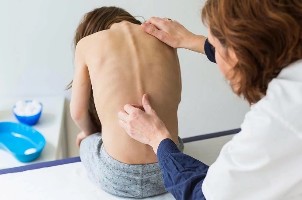
The Patient needs to know, which doctor treated osteochondrosis, to schedule an appointment immediately to the right specialist. Problems of the spine deals with the neurologist, you need to contact in case of pain in the back, neck, lower back. Investigation of patients with suspected osteochondrosis progresses in stages and may take from 1 to 7 days:
- Survey;
- or external examination of the spine were in different parts of the body (prone position, sitting, standing);
- Palpation of the spine, the soft parts;
- the determination of the Amplitude of the movements in different areas of the spine;
- instrumental investigations: computed tomography, magnetic resonance imaging, nuclear resonance, radiography.
In the case of a difficult diagnosis-specific studies of the blood vessels and the peripheral nerves.
How and what to treat osteochondrosis?
The treatment of osteochondrosis of the spine is long and requires a comprehensive approach. In the therapy of the drug are valid and physiotherapeutic methods of an individual approach to each patient. The choice of the therapeutic system is dependent on:
- severe pathology;
- the condition of the patient;
- the presence of complications of the disease.
Important condition for an effective treatment of osteochondrosis – poetapnost. The primary goal of therapy in acute diseases — treatment of pain. The Patient is asked to rest, the wearing of a special corset, and collar for the relief of the spine. The internal and or external therapy with medication is physiotherapy carried out. In the next step, action, warn the new aggravation:
- Physiotherapy (dosed physical exercises to strengthen muscle corset and the development of correct posture);
- Healing massage;
- manual therapy;
- Foot reflex zone massage, etc.
Drug Treatment
Drug therapy in osteochondrosis targets pain therapy, Regeneration of cartilage tissue, improve the trophism of the microcirculation in the affected segments of the spine. Patients prescribed:
- Pain relievers: non-steroidal anti-inflammatory drugs (tablets, injections, ointments, etc.);
- Muscle relaxants to decrease muscle tension, which appears when the osteochondrosis and causes pain;
- local treatment of pain – compresses with novocaine, pharmacological Blockade, pepper plaster, etc.;
- chondroprotectors, the Regeneration of cartilage;
- Vitamins and minerals in the Form of tablets or solutions for injection;
- Vasodilators for the removal of Reflex spasm of the blood vessels;
- Drugs for the normalization of metabolism in the tissues.

Physiotherapy
Physiotherapy or exercise therapy for osteoporosis promotes the formation of a strong muscular corset, the uniform distribution of the load on the spine. With regular practice:
- improves blood circulation and nutrition of the tissue, the intervertebral discs;
- is produced the correct posture;
- the amount of movements increased in the spine.
Breathing exercises help relieve muscle cramps and pain, and swimming also relieves and relaxes the spine.
Physiotherapy and rehab exercises on the simulators of the acute symptoms of the disease be carried out, according to abate.
Basic rules for the physical education:
- To do regularity (daily exercises);
- the slowness (the first classes, take 10-15 minutes each week, you increase the duration to 5 minutes within 2 months);
- Moderation (after Sport, the Patient feels a slight fatigue, exhaustion after exercise is a sign of the wrong approach to movement therapy).
The exercises should not discomfort bring. Upon the occurrence of back pain education should stop, and your doctor the opportunity to discuss further lessons.
Auxiliary methods of treatment of osteochondrosis
A comprehensive conservative treatment of degenerative disc disease, in addition to drug therapy, and physiotherapy includes:
- Massage: relieves muscle spasm, eliminate pain and improve the blood circulation in the tissues;
- manual therapy;
- Physiotherapy: Hydro-Massage, Laser Therapy, Magnetic Field Therapy, Ultrasound Effects;
- Traction of the spine using special equipment;
- Reflexology and acupuncture: the effect on the reflex zones of active points relaxes and relieves pain in the back.
The prophylaxis of osteochondrosis
In the case of the osteochondrosis, you reduce the load on the spine:
- wear comfortable, high quality shoes;
- avoid prolonged stay in an uncomfortable Position or in the Position;
- Control of body weight;
- a correct posture;
- don't lift weights, and develop if necessary, evenly with both hands for the weight distribution.
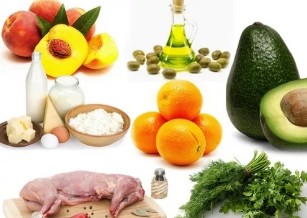
Should take care to condition and strengthen the muscles of the back, so the overall daily tonic, download lessons in the Pool, Yoga helps.
A key part of prevention of degenerative disc disease is a diet. You need to in the diet:
- Dairy products;
- Fish;
- broths;
- Jellies;
- Aspic;
- Leafy vegetables;
- Greens;
- Contained olive oil and Butter;
- Eggs.
Of carbonated drinks, alcohol, strong coffee, fatty meats, and avoid salty foods.
Overall, the diagnosis of osteochondrosis is not so easy: he has no stand-alone symptoms, often an x-ray recognises the problems in the spine in people, the pain never experienced long-term back. The first bells for the occasion, a doctor severe headache, horse racing, pressure, feeling of heaviness in the muscles, dizziness when turning the head can see. Often poor posture is reflected in the appearance of the bending of the back, and a pronounced hump, heavily arched loin and round Apache belly.


































